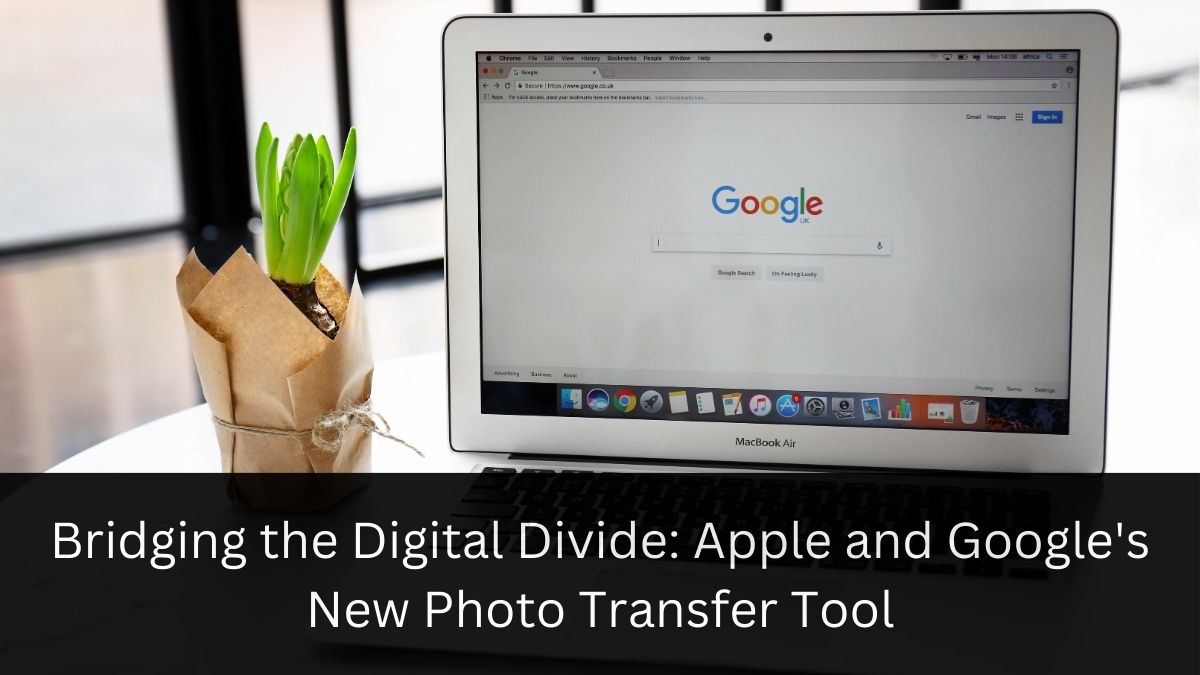Press Release
Bridging the Digital Divide: Apple and Google’s New Photo Transfer Tool

In an era where our digital lives are spread across multiple platforms, the ability to seamlessly move our data between services has become increasingly important. Apple and Google, two tech giants often seen as rivals, have taken a significant step towards user empowerment by introducing a new data portability tool. This innovative feature allows users to transfer their cherished memories from Google Photos directly to iCloud Photos, marking a pivotal moment in digital data management.
The Dawn of a New Era in Data Portability
A Reciprocal Relationship
The collaboration between Apple and Google isn’t entirely new. In 2021, they launched a tool enabling users to transfer photos from iCloud to Google Photos. Now, they’ve come full circle by offering the reverse option. This reciprocity is not just a technical achievement; it’s a testament to the growing recognition of users’ rights to their own data.
As someone who’s juggled multiple photo storage services over the years, I can’t overstate how welcome this development is. The frustration of having photos scattered across different platforms is all too familiar, and this tool promises to alleviate that pain point for many users.
The Data Transfer Project: A Broader Vision
This initiative is part of the larger Data Transfer Project, an open-source endeavor focused on enhancing data portability between online platforms. The project’s core principle of reciprocity is beautifully exemplified in this latest offering from Apple and Google.
Breaking Down the New Transfer Tool
Availability and Rollout
The new transfer capability is set to roll out over the coming week, reaching users in over 240 countries and regions worldwide. It’s worth noting that this service isn’t available for child accounts or Managed Apple ID accounts, likely due to privacy and security considerations.
Key Features and Limitations
- Non-Destructive Transfer: When you move photos and videos to iCloud Photos, they remain in Google Photos. This non-destructive approach ensures you don’t lose data in the process.
- Direct Transfer: There’s no need to download your media. The transfer happens directly from Google to iCloud, saving time and bandwidth.
- Time Considerations: Depending on the size of your collection, the transfer could take anywhere from several hours to a few days.
- Advanced Data Protection Incompatibility: You can’t import photo and video data to iCloud while Advanced Data Protection is enabled, highlighting the delicate balance between data portability and security.
The Transfer Process: A Step-by-Step Guide
Initiating the transfer is a straightforward process:
- Visit Google Takeout
- Follow the prompts to start an export from Google Photos
- Select “Apple – iCloud Photos” as your transfer destination
- Sign in with your Apple ID
- Grant Google permission to add photos and videos to iCloud
While these steps seem simple, they represent a complex backend process that ensures your data moves securely and efficiently between platforms.
The Bigger Picture: Implications for Users and the Industry
User Empowerment and Choice
This collaboration between Apple and Google signifies a shift towards greater user control over personal data. It’s a refreshing change in an industry often criticized for creating “walled gardens” that lock users into specific ecosystems.
I remember the days when switching between platforms meant potentially losing years of digital memories. This tool is a game-changer, offering users the freedom to choose their preferred service without the fear of data loss.
Industry Trends and Future Possibilities
The development of this tool raises intriguing questions about the future of data portability:
- Will we see similar collaborations between other tech giants?
- Could this pave the way for seamless data transfer across a broader range of services, beyond just photos?
- How will this impact competition and innovation in the cloud storage market?
Navigating Potential Challenges
Security and Privacy Concerns
While the tool offers convenience, it’s crucial to consider the security implications of transferring large amounts of personal data between platforms. Users should remain vigilant and ensure they’re using secure connections when initiating transfers.
Storage Limitations and Costs
It’s important to note that transferring a large photo library may have implications for your iCloud storage plan. Users should be aware of their current storage limits and potential costs associated with upgrading their plan to accommodate transferred photos.
The User Experience: Early Impressions and Expectations
As this tool rolls out, early adopters will play a crucial role in shaping its future. Their experiences, both positive and negative, will likely influence future iterations and improvements.
From my perspective, the success of this tool will hinge on its reliability and ease of use. If it can deliver a smooth, hassle-free experience, it could set a new standard for inter-platform data transfers.
The introduction of this photo transfer tool by Apple and Google represents more than just a convenient feature; it’s a paradigm shift in how we think about our digital assets. It acknowledges that our memories don’t belong to any single platform but to us, the users.
As we move forward in this increasingly interconnected digital age, tools like this will become not just useful but essential. They empower us to make choices based on the merits of each platform, rather than feeling trapped by our existing data.
What are your thoughts on this new transfer tool? Do you see yourself using it to consolidate your photo libraries? How do you think this might change your approach to managing your digital memories? Share your perspectives and experiences in the comments below – your insights could help shape the future of data portability!
